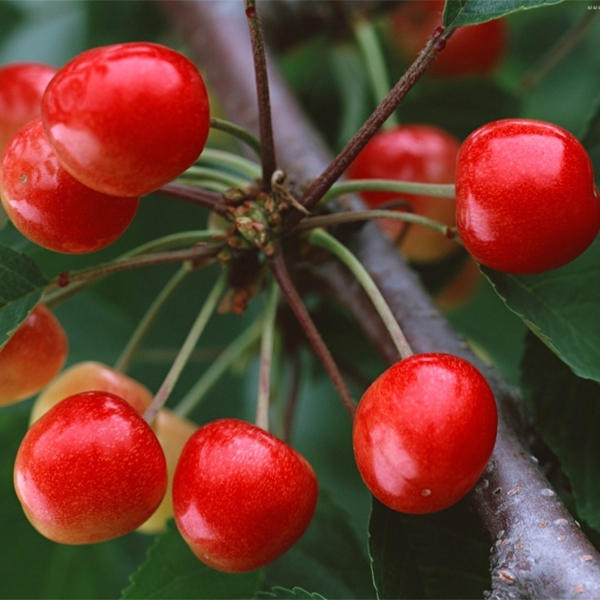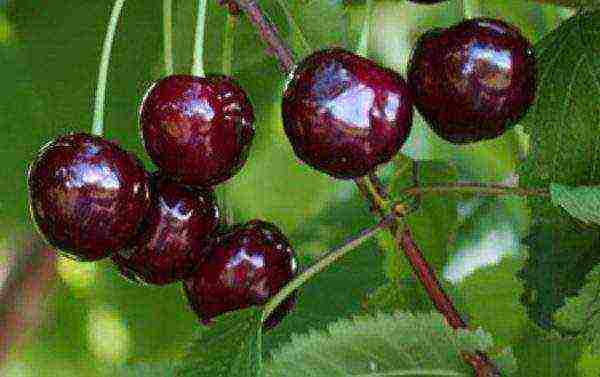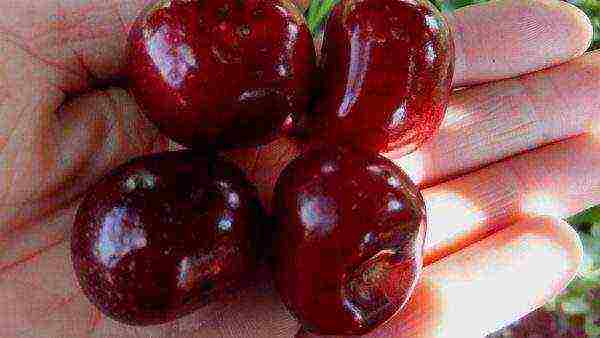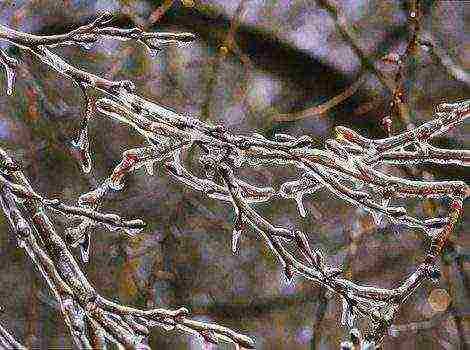Content
Description of the variety of cherries Leningradskaya black and others
Cherry has long won the hearts of gardeners and fans of it. There are many varieties of it in various colors: yellow, white, dark red and black.
Until a few decades ago, cherries (not cherries) were considered directly southern culture. But as a result of the important activities of breeders, it has spread to the far north.
Now it is possible to see it in areas of the middle zone of our country. The most important thing is to choose the right varieties and learn how to properly care for them. Breeders have developed a large number of sweet cherry varieties that are adapted to the harsh conditions of winter frosts. Thus, for the gardens of the Central District, it is recommended to plant the following varieties: Adelina, Veda, Revna, Rechitsa, Ovstuzhenka and Leningradskaya black.
Cherry Leningradskaya black
Let's start with a description. Leningradskaya black is recognized as the first winter-hardy variety. This variety was bred in the Pavlovsk experimental station of the VIR of the city of St. Petersburg.
Berries of Leningrad black are large, maroon in color, the average weight is five grams. The fruit is heart-shaped. Their taste is sweet, but slightly bitter.
In some cases, fruits are harvested only in the fifth year of life. The crops are characterized by abundance and long shelf life on the tree.
To get a good harvest from a sweet cherry, it should be planted in a sunny area.
Pests that pose a danger to cherries:
- First of all, rodents pose a threat to this variety. They dig holes to the roots and gnaw them. You should constantly monitor the soil near the tree and use scarers.
- Birds are enemies to the sweet cherry harvest. To protect the berries from birds, you need to cover the crown with a special net by the end of flowering.
If this is not possible, then watering is possible only from the morning hours, but it should be abundant. In order for the cherries to survive the winter safely, the branches should be cut off at the end of autumn. At the beginning of spring, the trunk and lower branches need to be whitened, thanks to which the tree can be saved from insects.

Ovstuzhenka variety
The sweet cherry variety Ovstuzhenka was developed at the All-Russian Research Institute of Lupine by combining the varieties Compact Venyaminova and Leningradskaya Black. The authorship belongs to M.V. Kanshina.
The early maturity of cherries is below average. A high yield can be observed after 4–5 years of tree development, but a forty-year-old plant is capable of bearing fruit.
The berries of this variety are rounded, weighing from 4.2 g. Their color is dark red, they are tasty and juicy, and their tonic properties turn them into healing ones. But since the fruits of Ovstuzhenka ripen in the gardens first, they attract birds and pests of the garden. The moth penetrates the fruit and eats the pulp, and the shriveled berry becomes unpleasant to the taste. To protect against birds, a net is placed on the crown of the tree during the fruiting period.
Recommendations for growing Ovstuzhenka:
- Seedlings must be purchased from a nursery or a specialized store. Inquire about the type of rootstock.Seed rootstocks are preferred. The cherry will grow strong and hardy. It is better to buy seedlings in the fall, since there will be a large selection during this period. In winter, the seedling is placed in a shallow trench. The tree is placed at an angle, and the roots are covered with soil.
- Planting is recommended in spring, after the topsoil has thawed. The pit is prepared before the winter cold. Young trees planted in autumn often die due to fragile roots, and wood that has dried up during the winter retards their growth.
Variety Veda
The Veda cherry variety was created at the All-Russian Research Institute of Lupine.
The fruits of this variety are medium-sized, one-dimensional, broad-heart-shaped, with an approximate weight of 5.1 g. The fruit stem is medium, without effort it separates from the branch. The color of the berries is dark red. The peel of sweet cherries is tender. Their flesh is dark red in color, tender and juicy. The yield of the Veda variety reaches 77 c / ha.
This cherry loves fertile light and medium loamy soils with a neutral reaction of the environment. She prefers moisture, but does not tolerate stagnant water.
The Veda variety has good resistance to environmental conditions and various diseases, such as coccomycosis. The Veda also endures the winter cold without complications.

Adelina
The Adelina variety was created at the All-Russian Research Institute of Genetics and Breeding of Fruit Plants. It was obtained by combining varieties: Slava Zhukova and Valery Chkalov.
The weight of cherries reaches 5.5–6.0 g. They are heart-shaped, dark red in color. The pulp is dark red, of moderate density. The fruits are easily detached from the stalk.
This variety is characterized by increased winter hardiness and has an average resistance to diseases such as coccomycosis and moniliosis.
Adeline's landing begins by choosing a site that should be closed from the northerly winds. The best solution will be gentle, southern or southwestern slopes, as well as places located on the southern side of buildings. It is recommended to make a small hill, raising the ground level by 0.5 m.
Young trees are planted in early spring before the buds swell, but preparation for planting occurs in autumn.

Rechitsa
The Rechitsa variety was selected for its marker properties from the seedlings of the Bryansk pink cherry. It was bred at the All-Russian Research Institute of Lupina M.V. Kanshina.
The average weight of the fruits is 4.9 g, the largest weight reaches 5.8 g. Sweet cherries are round in shape, with an average funnel. The color of the berries is almost black, while the pulp and juice are dark red. Their peduncle is long and not very thick. The pulp has a juicy and sweet taste.
Berries appear on the tree for 5 years. The average yield is 82 c / ha, the highest - 146 c / ha. Winter hardiness of cherries and flower buds is high. The Rechitsa variety is resistant to fungal infections.

Cherry Revna
Revna is the closest relative of the Bryanskaya Rozovaya variety, from the seedlings of which a variety, remarkable in its characteristics, was created.
Sweet cherries are medium in size. Their average weight is 4.7 g, and the largest is 7.7 g. The shape of the fruit is broadly round, with a wide funnel and a rounded top. Their skin is quite dense. The berries are dark red in color, which makes them almost black during removable and consumer ripeness.
When planting, they use the southern slopes, on which the cold air does not have the opportunity to stagnate. For the proper development of cherries, it is necessary that a large amount of sunlight falls on the plant. In this regard, the southern side of the garden, not shaded by buildings and other trees, will be the most successful option for planting.
Cherry Revna is not susceptible to fungal diseases.However, if other trees grow on the site and the year is not very suitable for growing different crops, each tree may be subject to disease. Then you should treat the plant with universal stone fruit products. Spraying is carried out before flowering, and, if necessary, after the tree has faded.

Vasilisa
The Vasilisa variety was bred in the Donetsk branch of the Institute of Horticulture of the UAAS by L.I. Taranenko as a result of the combination of the Donetsk coal and Donetsk beauty varieties.
The trees are fast-growing, they bring a large amount of harvest. Vasilisa berries are quite large, with dense pulp, weighing 12.5 g, red color, round, pleasant to the taste. The ripening period for sweet cherries is average.
Vasilisa is planted on loamy soils with a high moisture content. It is not necessary to place the tree on gravelly soils, since they are arid and completely unsuitable for growing cherries. It is recommended to plant young trees in the autumn. Before the frost begins, the cherry roots will be able to take root.

Sweet cherries of any of the above varieties are an excellent choice for any garden. But it must be remembered that large berries and healthy trees are not only the positive qualities of a certain variety, but also the result of the painstaking work of a real gardener.


